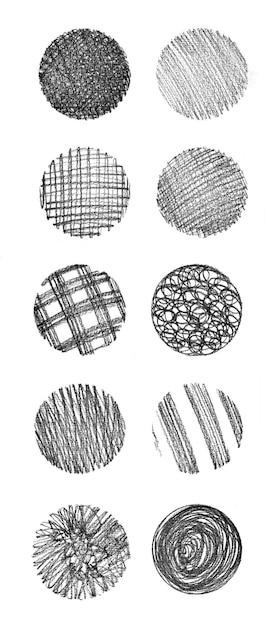Art is a vibrant and diverse world, where lines play a fundamental role in conveying meaning, emotion, and aesthetic appeal. Whether you’re a seasoned artist or an art enthusiast, understanding the different types of lines in art can deepen your appreciation for this expressive medium.
In this blog post, we will delve into the rich tapestry of lines in art, exploring their versatility and significance. From bold and straight lines to the intricate curves of calligraphy, we will unravel the 8 types of drawing lines and the 10 types of lines commonly used in art. We will also shed light on the various uses of lines in freehand sketching, drafting, and design.
So, whether you’re curious about the alphabet of lines, the elements of art, or the meanings behind different types of lines, this blog post will guide you through this fascinating artistic realm. Let’s embark on this visual journey to discover the myriad ways lines lend vitality and depth to art!
What Are the Different Types of Lines in Art
In the realm of art, lines are not merely a means of connecting points or outlining shapes. They have a language of their own and are powerful tools for expressing emotions and conveying messages. Let’s dive into the captivating world of art lines and explore the different types that artists use to create their masterpieces.
Straight Lines: The Rulers of Order
Straight lines are the epitome of precision and order in the art world. Like a disciplined soldier, they march across the canvas, creating a sense of stability and structure. From perfectly vertical lines that symbolize strength to horizontal lines that evoke a feeling of tranquility, straight lines bring a sense of calm and balance to any artwork.
Curved Lines: The Dance of Life
If straight lines are the rulers of order, curved lines are the freewheeling dancers of art. With their graceful arcs and elegant swirls, curved lines add movement and vitality to any composition. They can emulate the natural curves of organic forms or create a dynamic sense of flow and energy. Think of the swirling strokes of Vincent van Gogh or the sinuous lines of Gustav Klimt’s artwork – these masters knew how to make the canvas come alive through curvaceous lines.
Diagonal Lines: The Bold Rebels
Imagine a line that doesn’t conform to the rules of vertical or horizontal. That’s where diagonal lines come in – the bold rebels of the art world. Diagonal lines are filled with a sense of movement and action. They can create a visual tension and excitement, leading the viewer’s eye on a thrilling adventure across the canvas. Diagonal lines are often used to convey dynamism, change, and instability in art. They inspire us to embrace the unexpected and break free from the confines of convention.
Zigzag Lines: The Electric Sparks
What happens when you combine the rebellious nature of diagonals with the energy of sharp angles? You get the electrifying zigzag lines. These jagged lines zig and zag across the artwork, creating a sense of energy and vibrancy. Zigzag lines are often associated with chaos, tension, and excitement. They can depict lightning bolts splitting the sky or the jagged edges of a shattered glass. Zigzag lines infuse artworks with an electrifying jolt that captures the viewers’ attention and leaves them energized.
Contour Lines: The Silent Storytellers
Contour lines are like the silent storytellers of the art world. These lines delicately trace the outlines of objects, capturing their shape and form. They give us clues about depth, volume, and texture. Contour lines can create a sense of realism, allowing us to experience the artwork as if we were touching the subject itself. By varying the weight and distance between the lines, artists can infuse their creations with a three-dimensional quality that makes them come alive.
Lines in art are much more than mere strokes on a canvas. They have the power to evoke emotions, tell stories, and create a sense of harmony or chaos. Whether it’s the straight lines of order, the curves of life, the rebellious diagonals, the electric zigzags, or the silent contour lines, each type brings its unique flavor to the artistic palette. So, the next time you marvel at a painting or sculpture, take a moment to appreciate the artistry and mastery behind the lines that breathe life into the artwork.
FAQ: What Are The Different Types Of Lines In Art
Lines are an essential element in art that can convey various emotions, create depth, and add structure to a piece. In this FAQ-style subsection, we’ll explore the different types of lines in art, their meanings, and how they are used in various artistic styles.
What are the 8 Types of Drawing
- Sketches
- Gesture Drawings
- Contour Drawings
- Still Life Drawings
- Figure Drawings
- Perspective Drawings
- Technical Drawings
- Illustrations
What are the 10 Types of Line
- Horizontal Line
- Vertical Line
- Diagonal Line
- Curved Line
- Zigzag Line
- Dotted Line
- Broken Line
- Thick Line
- Thin Line
- Wavy Line
How Many Types of Straight Lines Are There
In art, three types of straight lines are commonly used:
1. Horizontal Line: Represents calmness and stability.
2. Vertical Line: Portrays strength and stability.
3. Diagonal Line: Adds movement and dynamism to a composition.
What are the Different Types of Lines
The different types of lines in art include straight lines, curved lines, wavy lines, zigzag lines, dotted lines, and broken lines. Each type conveys a distinct feeling or impression, allowing artists to evoke specific emotions in their audience.
What are Common Lines
Common lines are basic lines used in art and design. They include horizontal, vertical, diagonal, curved, zigzag, and parallel lines. These lines form the foundation for more complex compositions and can be combined to create various effects.
What are the Types of Straight Lines
The types of straight lines commonly used in art are horizontal lines, vertical lines, and diagonal lines. Horizontal lines convey calmness, while vertical lines symbolize strength and stability. Diagonal lines add a sense of movement and energy to an artwork.
What are the Types of Alphabet of Lines
In drafting and technical drawings, the “Alphabet of Lines” categorizes different types of lines based on their function. The types of lines in the alphabet include object lines, hidden lines, center lines, section lines, cutting-plane lines, phantom lines, dimension lines, and leader lines.
What are the 4 Main Categories of Art Styles
The four main categories of art styles are realistic, abstract, impressionistic, and expressionistic. These categories represent different approaches and interpretations of art, each with its own defining characteristics.
What is Zigzag Line Used For
A zigzag line is often used to portray dynamic movement or chaos in art. It can add excitement, tension, or a sense of urgency to a composition, capturing the viewer’s attention and keeping them engaged.
What are 5 Ways to Describe a Line
There are several ways to describe a line in art:
1. Length: Short, long, or infinite.
2. Width: Thick or thin.
3. Direction: Horizontal, vertical, or diagonal.
4. Texture: Smooth or rough.
5. Character: Curved, zigzag, or wavy.
What are the 4 Types of Sketching Lines
- Contour Lines: Define the edges and outline of a subject.
- Gesture Lines: Capture the movement and overall form of a subject.
- Construction Lines: Used as guidelines for proportion and placement.
- Hatching Lines: Create shading and texture through parallel lines.
What are 5 Types of Lines
- Horizontal Line
- Vertical Line
- Diagonal Line
- Curved Line
- Zigzag Line
What is Line in Art and Design
In art and design, a line is a mark or stroke made on a surface. It can be straight, curved, or a series of connected points. Lines serve as a fundamental building block in artistic compositions, guiding the viewer’s eye and conveying various emotions and meanings.
What are the 12 Types of Lines
- Horizontal Line
- Vertical Line
- Diagonal Line
- Curved Line
- Zigzag Line
- Wavy Line
- Thin Line
- Thick Line
- Dotted Line
- Broken Line
- Spiral Line
- Intersecting Line
What do Different Types of Lines Mean in Art
Different types of lines in art carry various meanings and evoke different emotions. For example, horizontal lines convey tranquility, vertical lines symbolize strength, diagonal lines suggest movement or action, and curved lines can evoke a sense of grace or fluidity.
What are the 7 Elements of Art
The seven elements of art are line, shape, color, value, texture, form, and space. These elements are the fundamental building blocks of any artwork and are used by artists to create visually compelling compositions.
What are the Different Kinds of Lines Used in Freehand Sketching
In freehand sketching, artists employ various kinds of lines to create depth and form. Some common types of lines used include contour lines, hatching lines, cross-hatching lines, stippling lines, and expressive lines.
What are the 7 Types of Lines in Art
- Horizontal Line
- Vertical Line
- Diagonal Line
- Curved Line
- Zigzag Line
- Wavy Line
- Spiral Line
What is Line in the Elements of Art
In the elements of art, line refers to a continuous mark made by a moving point. It is one of the basic visual elements that artists use to create shape, form, texture, and pattern in their artworks.
What are the Types of Lines and Their Uses
The types of lines in art and their uses are diverse. Artists utilize straight lines for stability or movement, curved lines for grace or fluidity, zigzag lines for energy or chaos, and dotted lines for texture or pattern. These various line types allow artists to convey different emotions and create visual interest.
What is the Type of Line Used for Line A
Line A is typically a horizontal line. Horizontal lines convey a sense of calmness, stability, and balance in an artwork.
What are the Different Types of Lines in Drafting
In drafting, which is used in technical drawings and architectural designs, various types of lines serve specific purposes. Some common types of lines used in drafting include object lines, hidden lines, centerlines, cut lines, construction lines, and dimension lines.
What are the 8 Types of Lines
- Horizontal Line
- Vertical Line
- Diagonal Line
- Curved Line
- Zigzag Line
- Wavy Line
- Thin Line
- Thick Line
Now that you’ve learned about the different types of lines in art, you can explore and appreciate the incredible diversity and expressive qualities that lines bring to artistic compositions. Experiment with these lines in your own creations and let your imagination run wild. Happy sketching!

